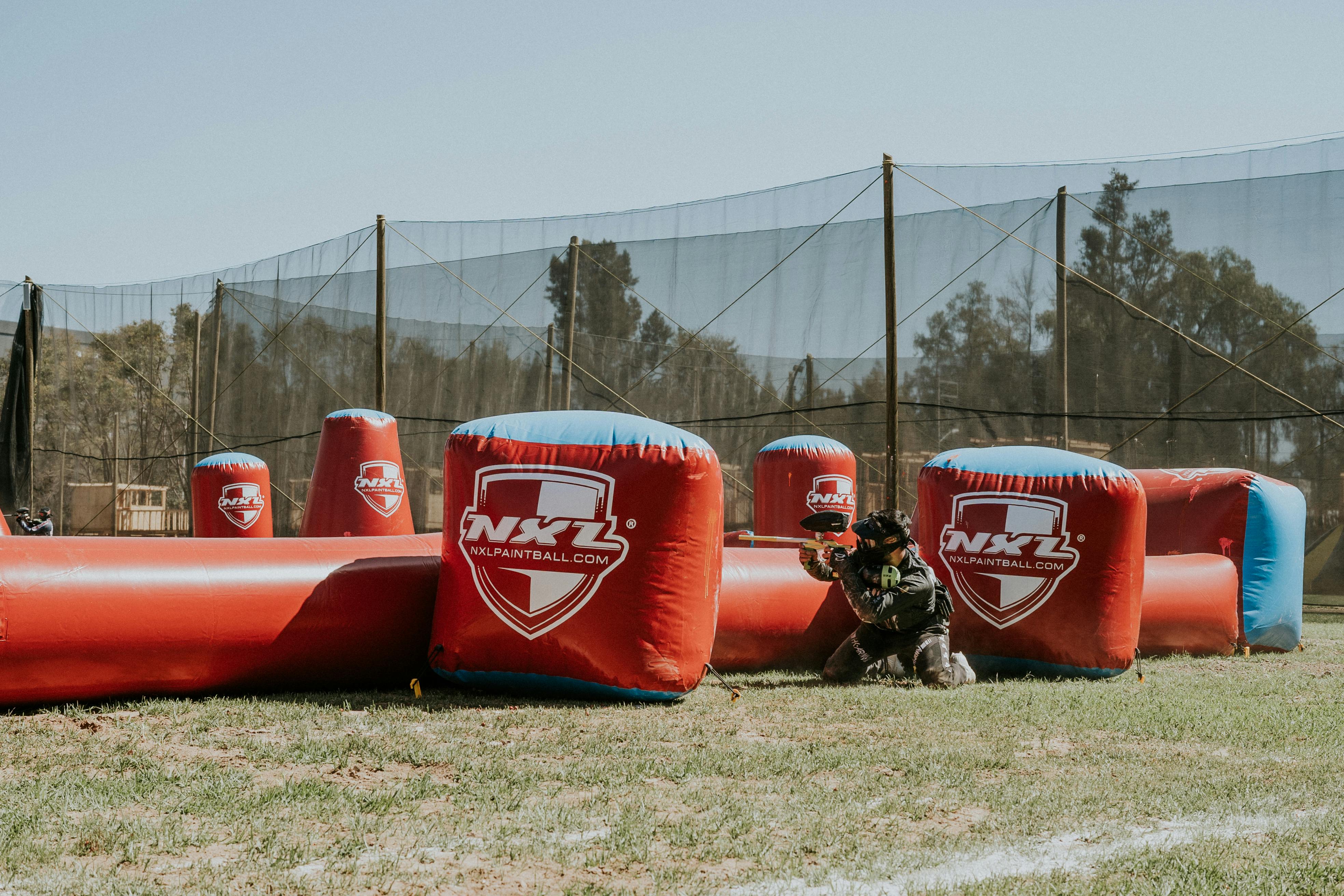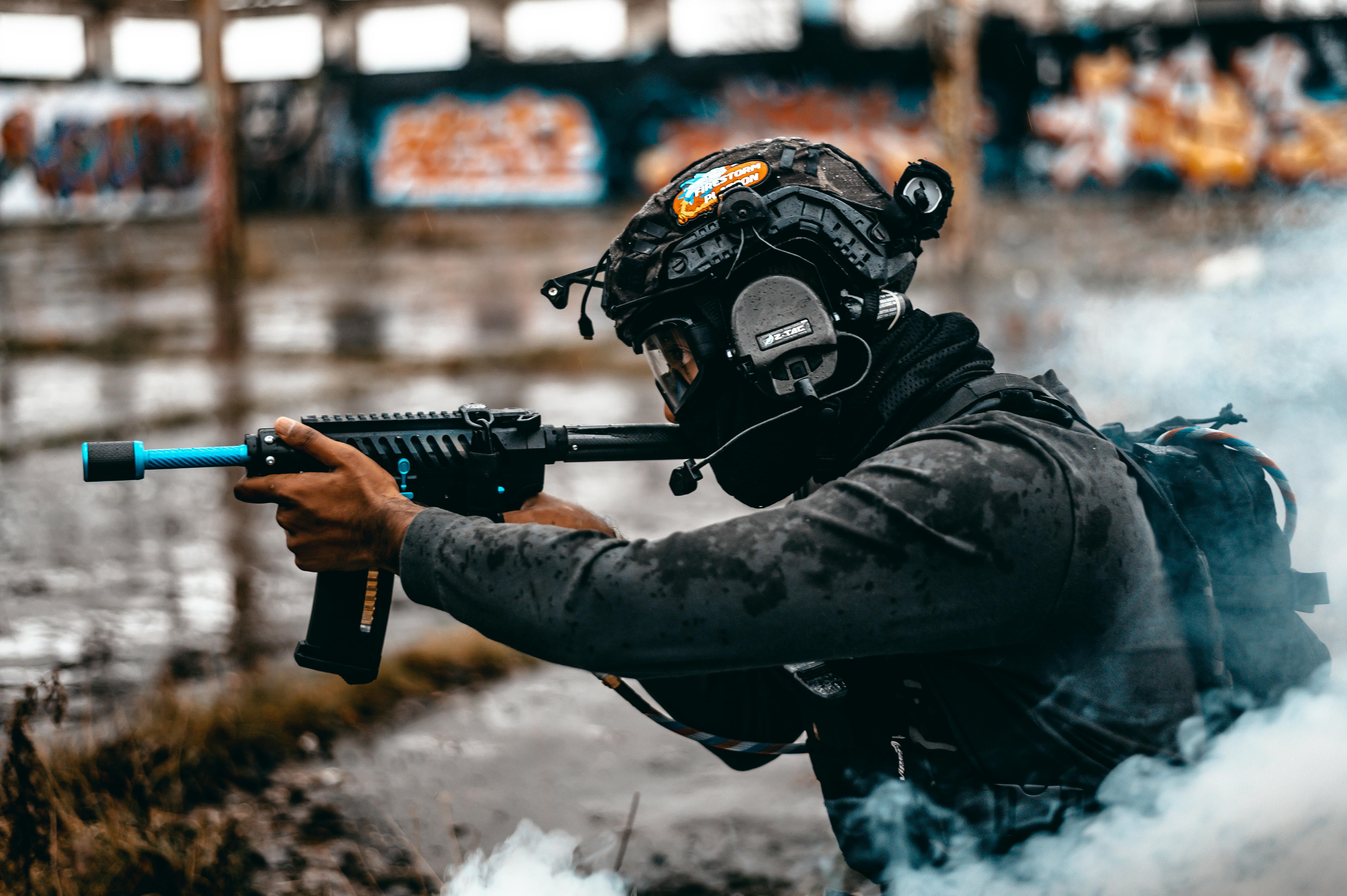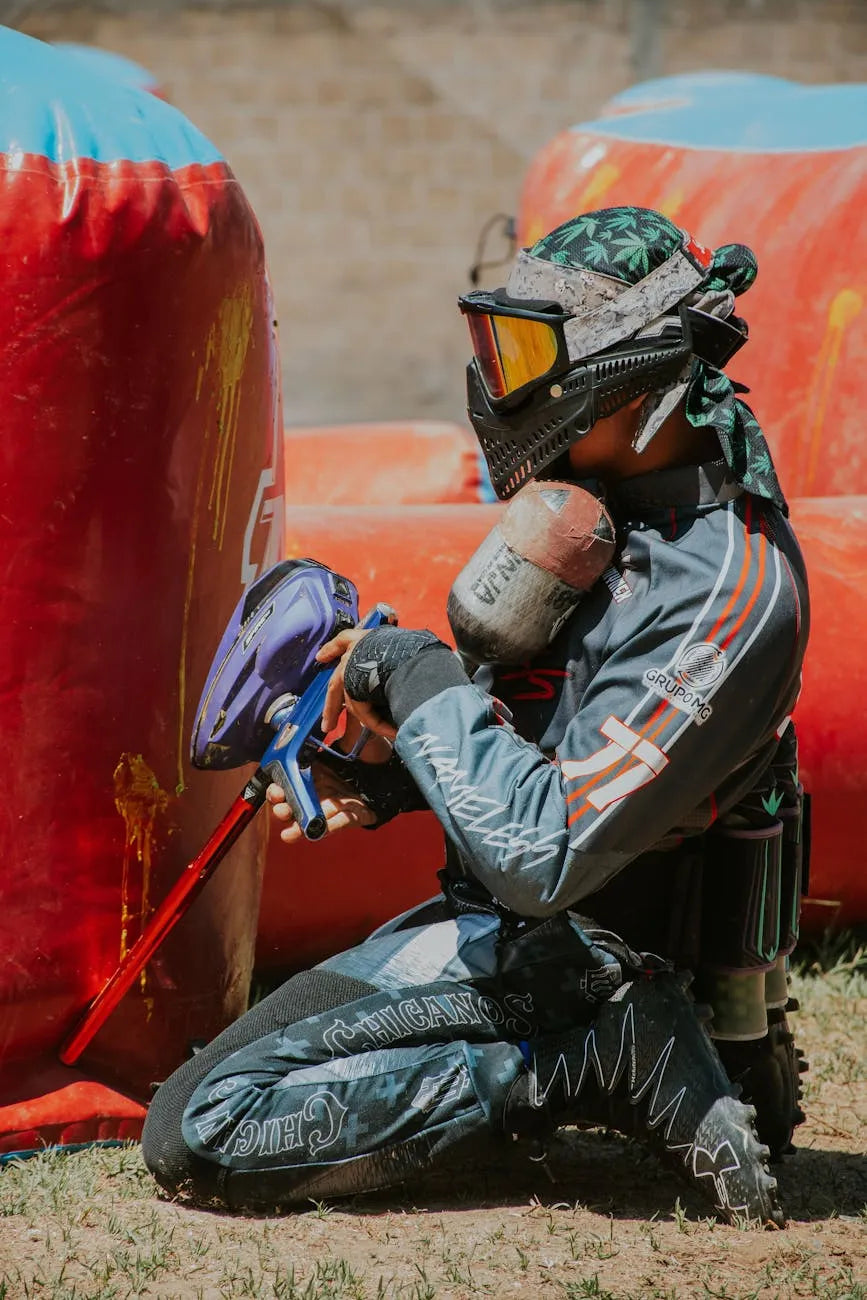Is Paintball A Sport 3 Compelling Reasons Why It Is 2025
Yes, paintball is absolutely a sport. My journey with paintball started unexpectedly. A childhood aversion kept me away for years. A medical leave forced me to reconsider. I discovered a depth I never imagined. Let's explore why it definitively qualifies.
Paintball demands physical prowess. It requires skill and strategy. It features organized competition under established rules. These are core elements defining any legitimate sport.
- Physical Exertion
- Strategic Skill
- Organized Competition
- Governing Rules
Defining a Sport Does Paintball Qualify
The Core Criteria
A sport generally involves several key components. Physical exertion is usually primary. Skill, honed through practice, is essential. Competition provides structure and goals. Rules ensure fair play and define the game.
Think about common sports. Soccer demands running, kicking skill, team strategy, and strict rules. Basketball requires agility, shooting precision, complex plays, and officiating. Paintball aligns closely with these fundamental aspects.
- Physicality: Requires running, diving, crawling, holding positions.
- Skill: Involves aiming, shooting techniques, movement, field awareness.
- Competition: Features teams vying for victory under set objectives.
- Rules: Governed by specific regulations and referees.
Paintball's Alignment
Paintball clearly meets these criteria. The physical demands are significant. Strategic thinking is paramount for success. Organized leagues and tournaments showcase high-level competition. Standardized rules govern play across various formats.
My own rediscovery highlighted this. Initially, I saw only chaos. Later, I observed complex tactics unfolding. It required quick assessment, like my work as an ER nurse. The strategic depth was undeniable. This shifted my perspective entirely.
- Global Participation: Leagues like the National Xball League (NXL) operate internationally.
- Governing Bodies: Organizations like the United Paintball Federation (UPBF) and national bodies (e.g., UKPSF) exist.
- Structured Play: Tournaments range from local skirmishes to massive international events like the NXL World Cup.

The Physical Demands Beyond the Stereotypes
Cardiovascular and Endurance Aspects
Paintball is far more than just hiding and shooting. It's a demanding cardiovascular workout. Players constantly sprint between bunkers. They dive, crawl, and change positions rapidly. Matches require sustained energy output.
Drawing from my experience, the intensity is surprising. Even short points leave you breathless. Tournament days involve hours of this activity. It builds significant stamina and endurance. Data supports this exertion level.
- Heart Rate: Studies show average heart rates reaching 130-150+ bpm during play. This signifies moderate-to-vigorous activity.
- Calorie Burn: Estimates suggest burning 400-600+ calories per hour. This depends heavily on play intensity.
- Movement: Players cover considerable ground sprinting and maneuvering.
Agility, Reflexes, and Strength
Beyond endurance, paintball demands agility and quick reflexes. Dodging incoming paint requires explosive movements. Snapping into shooting position needs coordination. Navigating complex field layouts tests spatial awareness.
Carrying equipment also adds a strength component. Markers, air tanks, and paint pods add weight. Holding firing stances engages core and upper body muscles. After thoroughly testing various terrains, the need for functional strength becomes obvious.
- Agility: Quick changes in direction are constant.
- Reflexes: Reacting instantly to opponent actions is crucial.
- Strength: Handling gear and maintaining positions requires muscle engagement.
- Coordination: Aiming while moving demands high hand-eye coordination.

Organization and Competition The Structure of Sport Paintball
Leagues, Tournaments, and Rulesets
Organized paintball mirrors traditional sports structures. Major leagues like the NXL govern top-tier play. They host international events with various formats. Speedball, woodsball, and scenario games each have specific rules.
Referees enforce these rules strictly. Penalties ensure fair competition. Player rankings and team classifications exist. This structure elevates paintball beyond casual recreation. It fosters serious, high-level athletic contests.
- Major Leagues: NXL (US, Europe, Australia), WNXL (Women's Pro).
- Formats: Speedball (fast-paced, symmetrical fields), Woodsball (natural terrain), Scenario (themed, objective-based).
- Rules: Standardized regulations cover gameplay, equipment, safety, and penalties. Example: NXL Xball ROF cap is 10.5 bps.
Competitive vs Recreational Play
There's a vast difference between casual play and competitive paintball. Recreational games are often slower, less structured. Competitive paintball is incredibly fast-paced and strategic. The equipment, field layouts, and intensity differ significantly.
My first chaotic experience was recreational. My later tournament exposure revealed the sport's true nature. Understanding this distinction is key. Competitive paintball requires intense training and dedication, much like any other sport.
| Feature | Recreational Paintball | Competitive Paintball (e.g., NXL Speedball) |
|---|---|---|
| Pace | Often slower, intermittent | Extremely fast, high intensity |
| Equipment | Basic rental gear (semi-auto) | High-end markers (10.5 BPS cap), specialized gear |
| Field | Varied woods/concept fields | Standardized, symmetrical (150ft x 120ft) |
| Strategy | Less formal, individual focus | Highly coordinated team tactics & communication |
| Rules | Basic safety rules | Strict format rules, enforced penalties |
| Objective | Often simple elimination | Flag captures/hangs, point scoring under time |
| Approx Cost | Lower entry barrier | Significant investment in gear & participation |
- Intensity: Competitive play demands peak physical and mental performance.
- Teamwork: Coordinated strategies are essential for success.
- Investment: Requires time for practice and financial resources for gear/travel.
Safety A Foundational Pillar
Mandatory Gear and Regulations
Safety is paramount in making paintball a viable sport. Strict regulations are universally enforced at organized fields. The single most important rule is wearing proper eye and face protection. Masks specifically designed for paintball are mandatory.
These masks meet specific safety standards (like ASTM F1776). Fields also enforce velocity limits. Paintballs cannot exceed a certain speed, typically 280-300 feet per second (FPS). Chronograph stations ensure compliance before play begins.
- Mandatory Masks: Full face/eye protection meeting safety standards (ASTM F1776) is required at all times in play zones.
- Velocity Limits: Maximum speed is usually capped at 300 FPS, often lower (e.g., 280 FPS).
- Barrel Covers: Barrel socks or plugs are required in safe zones.
- Referee Oversight: Trained staff monitor games and enforce safety rules.
Injury Rates in Context
When safety rules are followed, paintball is remarkably safe. Statistics often show lower injury rates than many traditional sports. Activities like soccer, basketball, or even cheerleading can have higher instances of serious injuries. Most paintball injuries are minor sprains or bruises from running or diving.
Proper gear and rule adherence mitigate risks significantly. My background as an ER nurse gives me perspective on sports injuries. Paintball, when played correctly, is far from the dangerous activity some perceive it to be. Clear vision is also a key component of safety and performance.
- Follow all field safety rules rigorously.
- Always wear approved paintball masks correctly.
- Ensure markers are chronographed below the field limit.
- Listen to referee instructions at all times.

Enhancing Performance and Vision on the Field
The Critical Role of Clear Vision
In paintball, seeing clearly is everything. It affects strategy, accuracy, and safety. You need to spot opponents quickly. You must track fast movements across the field. Precise aiming depends on sharp visual focus. Foggy goggles or shifting glasses can ruin your game.
I learned this the hard way. During a critical night match at the Rocky Mountain Invitational, my vision failed me. Struggling with ill-fitting goggles over my glasses, fog became an issue. Poor depth perception under the lights led to a crucial mistake. It cost my team the match and highlighted how vital clear, reliable vision is.
- Target Acquisition: Spotting opponents hidden behind bunkers.
- Tracking Movement: Following players sprinting across open lanes.
- Aiming Accuracy: Lining up shots precisely under pressure.
- Situational Awareness: Reading the field and anticipating plays.
Overcoming Visual Challenges
Many players face vision hurdles. Wearing glasses under goggles is cumbersome. They can shift, break, or fog easily. Contact lenses offer an alternative. However, they often dry out during intense play. Wind and dust on the field exacerbate discomfort. These issues detract from focus and performance.
After my frustrating experiences, I sought a better solution. A teammate recommended Overo Prescription Goggle Inserts. They changed my game entirely. These inserts fit securely inside my favorite goggles. They provided the exact prescription clarity I needed. No more fog, no more shifting frames.
- Fogging: A major issue with glasses or low-quality lenses, especially in humidity or cold. Overo's anti-fog coating maintains clarity.
- Discomfort: Glasses under goggles press on the face. Overo inserts eliminate this pressure.
- Instability: Glasses can move or fall off during dives. Overo inserts stay locked in place.
- Dry Eyes: Contacts can become irritated. Inserts avoid direct eye contact issues.
Overo inserts use durable PC frames. The CR39 lenses are impact-resistant, UV-blocking, and crafted to your precise prescription. Their unique design allows vertical adjustment. This ensures a perfect fit for different face shapes and goggle models. They are compatible with major brands like Oakley and Smith. At $119.99, they offer exceptional value compared to alternatives like Youzee ($165+) or the complex process at Sportrx. The clarity and stability felt transformative, restoring my confidence. It directly contributed to better performance, like in a later CQB tournament victory.
- Material: Tough PC Frame, sport-grade CR39 Lenses.
- Features: Anti-fog coating, UV protection, adjustable height.
- Compatibility: Universal fit for most major goggle brands.
- Value: High performance at a competitive price point.
Accessibility and Inclusivity
Clear vision shouldn't be a barrier to enjoying paintball. Solutions like Overo make the sport more accessible. Players with various prescriptions can participate fully. They can experience the thrill without visual compromise. This inclusivity strengthens the paintball community.
I saw this firsthand coaching a youth clinic. A talented young player, Leo, struggled with nystagmus. Tracking targets quickly made him dizzy. Trying Overo inserts made an immediate difference. His tracking smoothed out, his accuracy improved, his confidence soared. Seeing him thrive reinforced my belief. The right gear empowers everyone to play their best.
- Customization: Lenses made to individual prescriptions.
- Comfort: Stable, pressure-free fit enhances endurance.
- Confidence: Reliable vision allows players to focus on the game.
- Empowerment: Enables players with vision correction needs to compete effectively.
So, is paintball a sport? Unequivocally, yes. It demands athleticism, strategic thinking, and operates within organized structures. Drawing from my journey from skeptic to semi-pro player, the physical and mental rigor is undeniable. Ensuring clear vision is just one part of optimizing performance in this dynamic sport. Overcoming my own visual challenges with the right gear proved essential. Paintball offers intense competition and rewarding experiences for all who embrace the challenge.
Frequently Asked Questions
Is paintball really considered a sport?
Yes, paintball qualifies as a sport because it requires physical exertion, strategic skill, organized competition, and adherence to governing rules – all characteristics of traditional sports like basketball or soccer.
What makes paintball physically demanding?
Paintball involves activities like sprinting, diving, crawling, and maintaining firing stances, which require cardiovascular endurance, agility, strength, and reflexes.
What is the difference between recreational and competitive paintball?
Recreational paintball is more casual, with slower-paced games and basic equipment. Competitive paintball involves high-intensity gameplay, strict rules, structured formats, advanced strategies, and specialized gear.
How safe is paintball, and what gear is mandatory?
When played according to strict safety rules, paintball is remarkably safe. Mandatory gear includes masks with ASTM-certified protection, barrel covers, and velocity-limited markers typically capped at 280-300 FPS.
How does vision impact paintball performance?
Clear vision is crucial for tracking opponents, aiming accurately, and maintaining awareness. Specialized solutions like Overo Prescription Goggle Inserts can help players with vision challenges perform at their peak.
References
- Gelsoft Australia: Gel Ball vs Paintball Comparison - A detailed comparison between gel ball and paintball sports.
- Battlegroundz: Paintball Overview - An overview of the paintball experience and game formats.
- NXL Paintball - The official website of National Xball League for competitive paintball events.
- M.Carter Brown: Has Paintball Peaked? - A discussion on the evolution and peak of paintball's popularity.
- Annandale Paintball - Paintball and its role in teamwork and corporate outings.



Share:
Paintball Gun Speed 2025 How Fast Do They Shoot
How Fast Does a Paintball Gun Shoot 2025 Guide